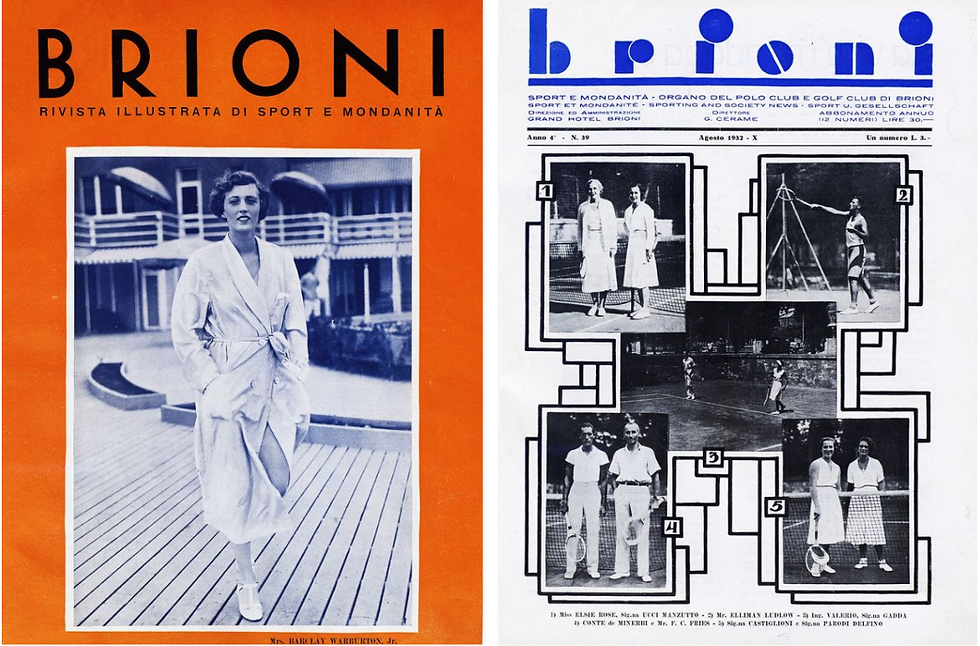Brioni Islands: Inside the Mythical Adriatic Archipelago That Time Forgot
- Hinton Magazine

- 5 hours ago
- 3 min read

There are places in the world that feel less like destinations and more like memories. The Brioni Islands, scattered like polished stones along Croatia’s Adriatic coast, belong to this rare and evocative category. They rise from the sea as emerald fragments, where pine forests soften into gentle meadows and Roman ruins sit patiently in the grass, untouched by the rush of passing centuries. To wander through Brioni is to feel suspended in a dreamlike interval, poised somewhere between Yugoslav modernism, Austro Hungarian elegance and the last glow of a Mediterranean golden age.
A new publication, titled Brioni Islands and edited by Reiner and Sabina Opoku, sets out to capture the depth and contradictions of this remarkable archipelago. Lavishly illustrated and meticulously researched, it becomes the first work to present a complete cultural, artistic and historical survey of a region often spoken about in hushed tones, as if its enchantment were best preserved by secrecy.

What the Opokus accomplish here is more than a tribute. They reintroduce Brioni as a living and breathing environment, shaped by centuries of imagination and ambition, but equally capable of provoking new ideas about heritage and sustainability. Once the discreet stage of diplomacy and the home of the non aligned movement, Brioni emerges in these pages as a point where nature and culture remain deeply intertwined.
At the centre of the book’s visual journey is photography by Tom Wagner. His images of Brioni, captured across the seasons, reveal an atmosphere that feels at times almost theatrical. With deliberate symmetry and a palette reminiscent of the whimsical worlds of Wes Anderson, Wagner shows interiors washed in fading pastels and landscapes of richly manicured greens. There are no people in his frames. Instead, he creates a gentle disorientation, as if viewers have arrived moments after an unseen performance has finished. The effect is both haunting and alluring. Brioni becomes a place where the past is not simply remembered but felt.
The publication is anchored by six essays, each written by a contributor whose relationship with the islands brings a distinct interpretation. One traces Kupelwieser’s ambitious transformation of the once malarial terrain into an illustrious resort at the beginning of the twentieth century. His vision introduced the grand Hotel Neptun and Hotel Karmen, venues that helped secure Brioni’s place among Europe’s most coveted escapes.

Another essay enters Brioni during its most glamorous era, when Tito used the archipelago as both a stage for diplomacy and an intimate retreat. Here, world leaders and cultural icons converged in a moment that now feels almost mythical. Queen Elizabeth II walked these paths. Elizabeth Taylor, Sophia Loren, Fidel Castro and Josephine Baker all found themselves guests of the islands, each visit adding another layer to its shimmering social history.
Pavletic offers archaeological insight, revealing the deeper cultural strata that underpin the archipelago’s identity. Pizzaroni contributes a fictional interlude, offering an imaginative counterpoint to the factual narrative, while Serbedzija reflects on the revival of the Ulysses Theatre and its continuing cultural resonance. Finally, Kellein’s concluding essay reframes Brioni as a model for the future, one that suggests how creativity, memory and environmental care might coexist in new and meaningful ways.
What makes Brioni Islands so compelling is its refusal to pin the archipelago to a single definition. Instead, it gathers multiple viewpoints to build a portrait that is layered, nuanced and alive. The result is a study that honours the past without romanticising it and acknowledges the present without diminishing its mystery.

For those unfamiliar with the region, this book offers an intimate introduction to a part of the Adriatic that continues to live outside the glare of mass tourism. For those who already know the Brioni Islands, it presents an entirely new way to see them. And for everyone who has ever sought a place where history lingers in the air, this publication stands as a reminder that magic still exists, quietly waiting off the coast of Croatia.
.png)
_edited.jpg)












Comments